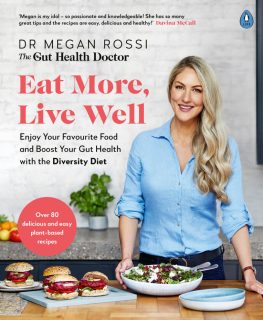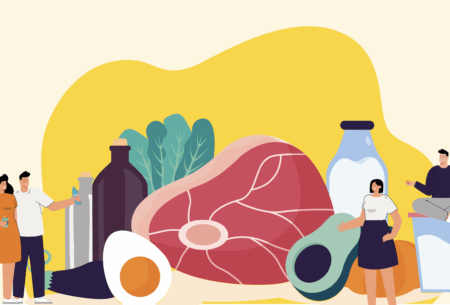Put down those boring bran flakes and read this! Fibre = FLAVOUR.
So many of you guys shared what foods you thought were highest in fibre – oats, wholegrains, beans and broccoli were the top votes. But it’s so much more than just those gut-loving grains and pulses.
Invite every food group to your plate. Add something new to your shopping basket every week. Eat the rainbow!
There’s no need to get fixated on the numbers – it’s all about getting as much variety as you can. Do that and chances are you’ll be filling your fibre needs too.
For those into number-crunching, here’s how much fibre you’re getting in some of your favourite plant foods, based on normal portions too (with none of the smoke and mirrors on some packaged products distorting their serving sizes)
- Passion fruit flesh = 12.2g per ½ cup
- Hubbard squash (cooked) = 10g per cup
- Chia seeds = 9.8g per 20g
- White beans (cooked) = 9.3g per ½ cup
- Green peas (cooked) = 8.8g per cup
- Adzuki beans = 8.4g per ½ cup
- Red kidney beans (boiled) = 8.25g per ½ cup
- Oats (uncooked) = 8.25g per ½ cup
- Sweet potatoes (boiled) = 8.2g per cup
- Raspberries = 8g per cup
- Lentils (cooked) = 7.8g per ½ cup
- Oat bran = 7.25g per ½ cup
- Avocados = 6.5g per ½ avocado
- Chickpeas (cooked) = 6.25g per ½ cup
- Broccoli (cooked) = 5.1g per cup
- Bulgur (cooked) = 4.1g per ½ cup
- Banana = 3.1g per medium banana
And for anyone wondering, bran flakes tend to have around 3.7g per serve.
Do any of these surprise you?
If you’re sitting there thinking “how can I possibly get more fibre when these foods don’t agree with me?” Let me bust that myth!
Fibre is an amazingly powerful nutrient. It feeds our gut bacteria which is so important for not just our digestive health, but the health of just about every other organ in our body.
But if you go from a little to a lot too quickly, when the bacteria eat they produce gas – so if you go from a little to a lot too quickly, it’s no bad thing but this extra gas can make you feel a little bloated and windy! 💨 The gut is incredibly adaptable, just give it a bit of time and increase slowly to adjust to the extra feast.
Hitting your 30g a day? It’s not necessarily the ‘golden’ number, so why not try getting 50g – the more the merrier (our ancestors were having around 100g daily fibre!)














